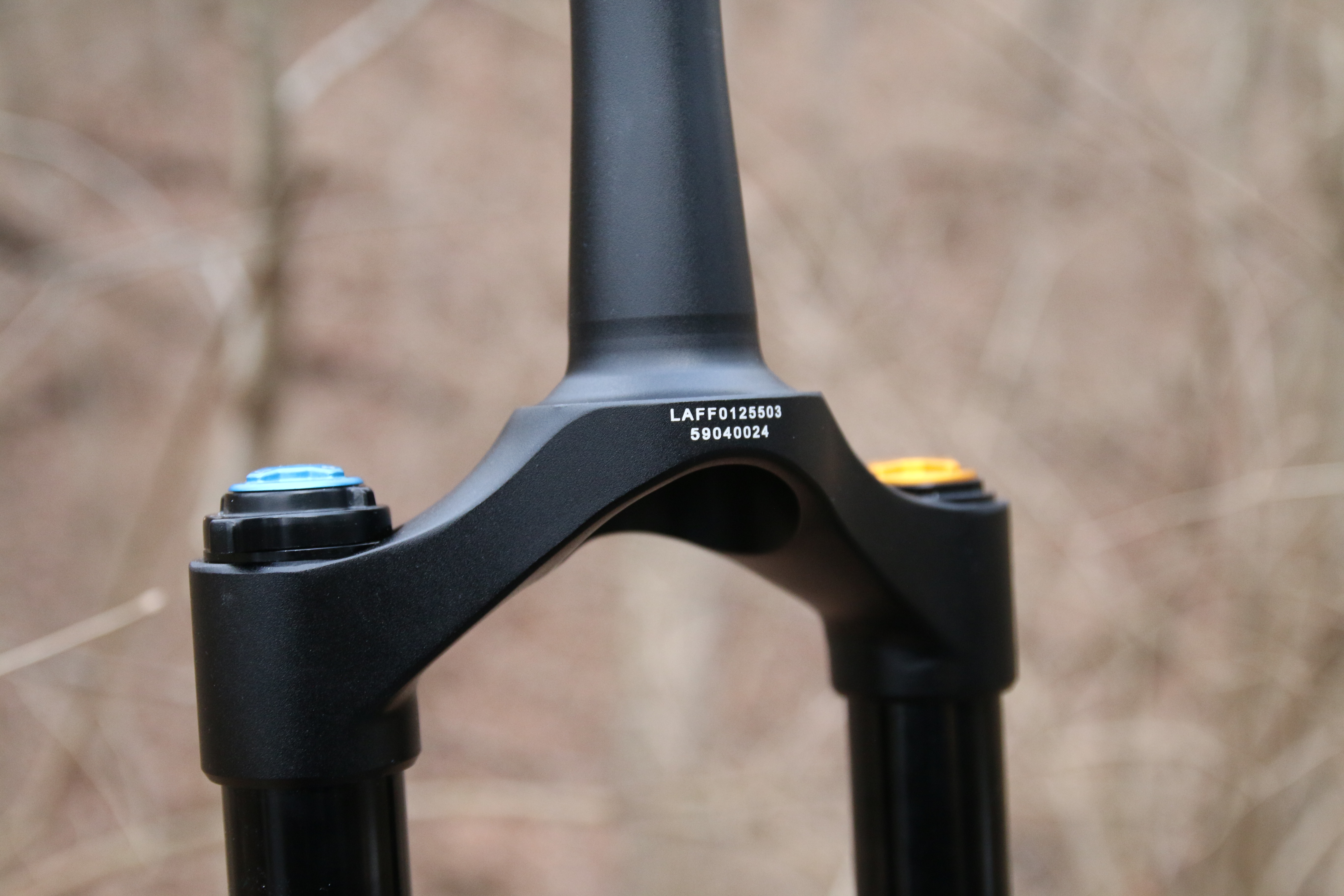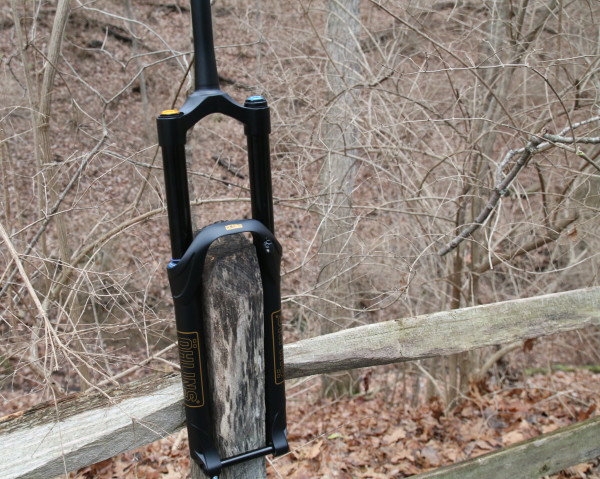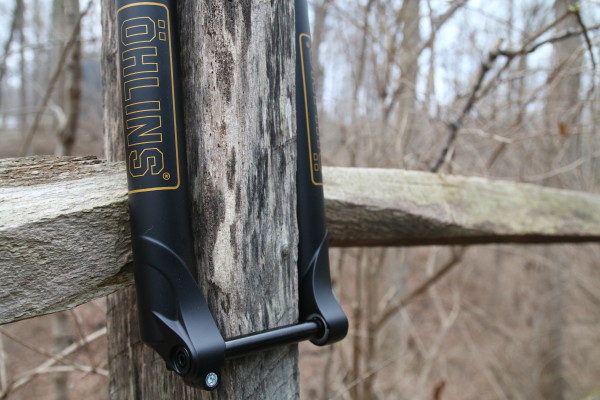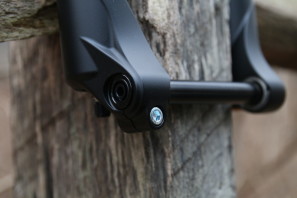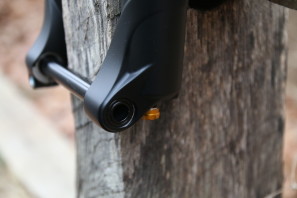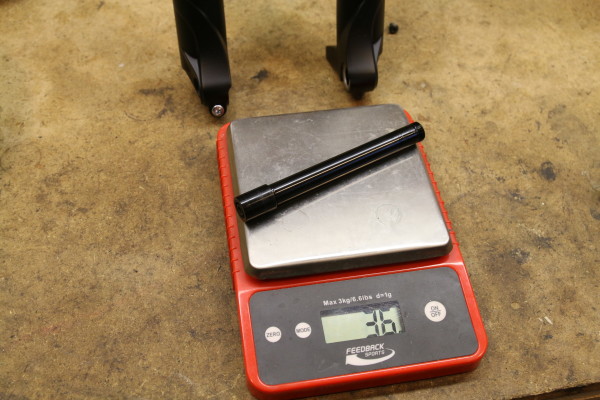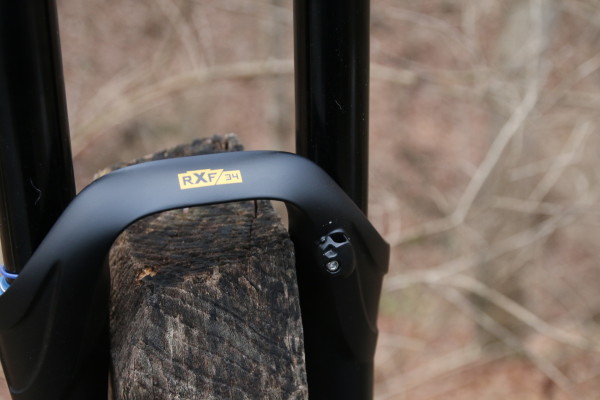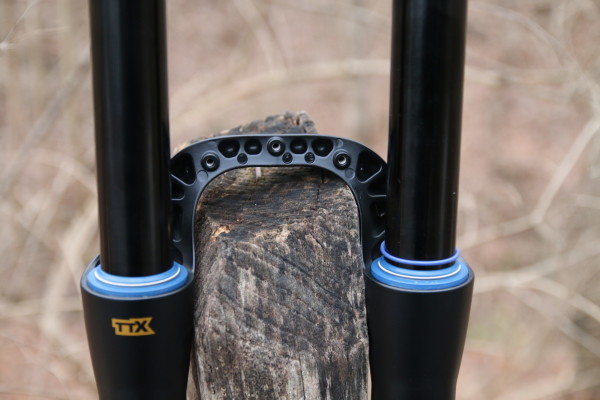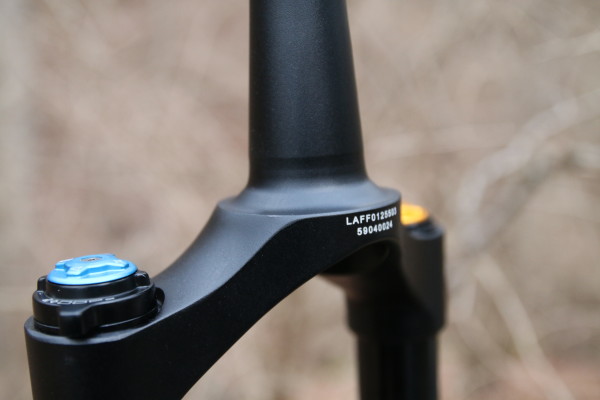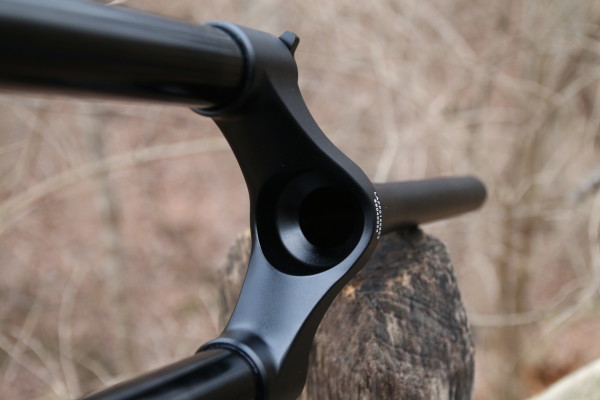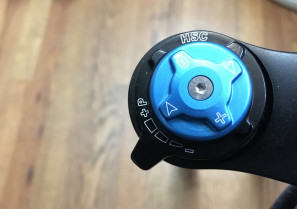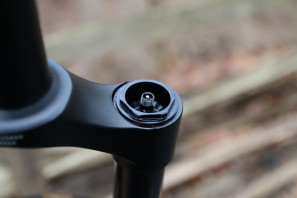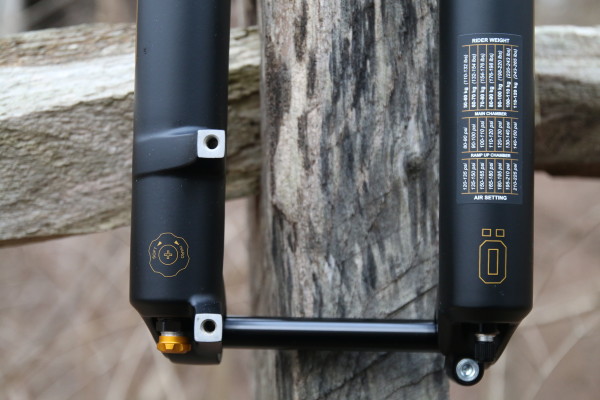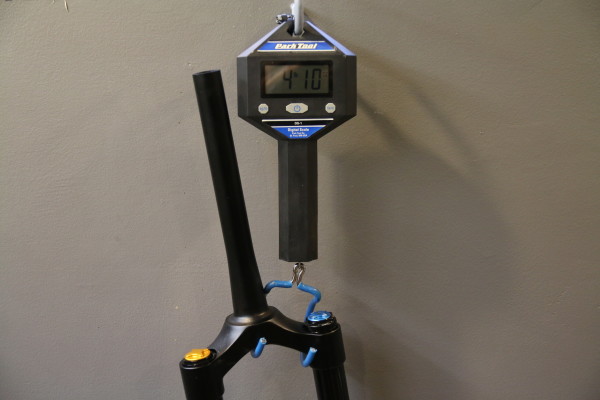Since the early days of mountain biking, any time there has been an introduction of a new suspension brand, it has been cause for excitement. With the ridiculous suspension tech we have at our disposal now, it’s hard to imagine a time where elastomers were cutting edge. Now, even with a number of great suspension options available, we’re seeing the birth of what could be another major player in the mountain bike world.
We’re talking about Öhlins new RXF fork, of course. Those familiar with motorcycle racing, automotive, or even motocross or enduro (moto) racing will have no problem identifying the trademark gold of the Öhlins logo. Thanks to their partnership with Specialized, Öhlins is now offering both front and rear suspension components for bikes that require you to pedal. Now that the holiday shipping frenzy has died down, we have a sample of our own so that we can take a closer look…
So just how does a company go about making their first mountain bike suspension fork? As we found out earlier in the year, according to Öhlins USA’s Marketing/MTB Manager Jeff Baucom, the project started out as drop in damping cartridges. This worked for large diameter forks like the Fox 40, but ran into snags with smaller stanchions. While a few prototypes were made for forks like the RockShox Pike we saw at Eurobike, the challenges in retrofitting existing forks led Öhlins to creating their very own fork. The RXF.
The result is a 34mm chassis that for the moment is only available in 29″ wheel sizing and in 120, 140, or 160mm travel. One key bit of information we found was that the travels are not able to be changed. According to Baucom, the only way to change travel would be to replace a lot of expensive parts since the fork uses a pressurized, Twin Tube damping system.
The fork is also only available at the moment with a 15x100mm thru axle. That’s good news if you already own 29er wheels and plan on swapping the fork – not so good news if you just bought a bike with Boost spacing. Even with the non-Boost spacing, Öhlins claims they were able to create one of the stiffest 34mm stanchion forks on the market and still offer a lot of tire clearance – the arch is about 80mm wide at the widest point. Wide enough that it may actually work for 27+ wheels and smaller plus tires as well.
While there is no quick release option, the bolt on axle is very simple and quick to remove. A single 5mm pinch bolt at the front of the right fork leg clamps the axle in place and the axle is installed or removed with a 5mm hex fitting of its own. The result is a very light 36g axle.
Up top, a fairly standard looking arch offers a bolt on cable guide. On the backside there are three threaded bosses which make us think that an integrated fender might be in the works. The blue fork seals are typical mountain bike stuff with a foam ring below the dust wipers. They carry no labeling other than Öhlins, but we wouldn’t be surprised if they were made by SKF. In fact, a few web retailers are already advertising replacement SKF fork seals for Öhlins/X-Fusion 34mm forks.
Other than the TTX twin tube damping system, the forged unicrown is one of the more interesting features. Forged from a single piece of aluminum, the steerer tube and crown assembly are said to increase the stiffness of the entire chassis. It also does away with the need for a crown race – which means it is only compatible with bearings that match the steerer tube.
According to Specialized, the fork has a 40mm OD at the lower crown race and is intended to interface with the 40mm ID/45º lower bearing angle. That includes the 40/52mm 45º x 45º bearings found in the Specialized Hella Flush headset as well as the Cane Creek 40 Series IS52-40 lower bottom bracket assembly and any other that matches with the 40mm internal diameter and 45º bearing angle. That apparently leaves out Chris King headsets who again according to Specialized do not offer a compatible lower bearing.
Adjustment wise, the fork offers independent high and low speed compression settings and a single rebound adjustment. In total there are 13 clicks of low speed compression and rebound adjustment and 5 clicks for high speed compression. The high speed compression adjustment is not a lockout, but will remove unwanted suspension travel as it affects the entire compression circuit towards the end of its adjustment.
While Öhlins is apparently waiting to reveal all of the info on the air system of the RXF, we know that it uses 3 different air chambers – two positive and one negative. From the set up instructions and what we’ve been told, it seems the upper air fitting fills both the main positive and negative chambers at once, while the lower air fitting is the ramp up chamber which runs a higher pressure than the main air spring. So if you need more bottom out resistance you would add air to the lower fitting, while general sag is set up through the pressure up top. Air settings are provided for rider weights up to 265 lb(120kg).
Up on the scale, this uncut 160mm travel fork measured 4lb 10oz, but on the gram scale it was 2140g. According to the owner’s manual, Axle to Crown measurements are 571/551/531mm for 160/140/120mm forks respectively with an offset of 46mm. It also calls out service intervals of 50 hours for inspection/cleaning of the lowers/seals/bushings and a full rebuild with new seals and oil at 100 hours / 1 year of riding.
When asked about 27.5″ forks, we were told that “more products were definitely in the works” but that’s all they could say at the moment. Currently, the 29er forks will be sold through Specialized or Öhlins USA for $1150.
